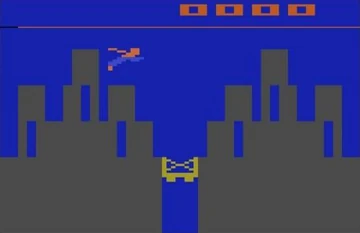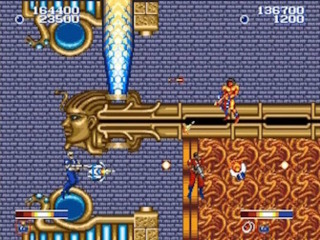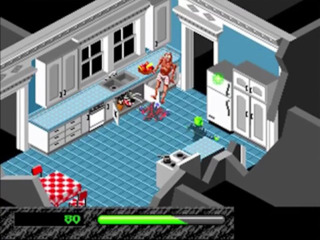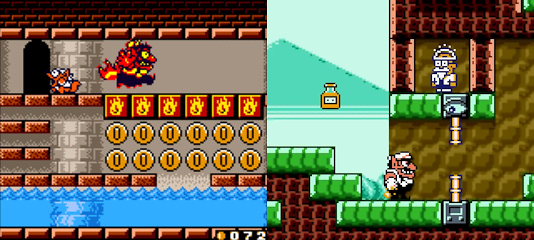This week I want to shine a spotlight on something that in real life has fascinated people since we could formulate our thoughts around it: Immortality. In games, while it's common to flirt with the concept to for example play around with a game's pacing and difficulty curve (see the earlier post about power ups), and of course through extra tries (1-ups), permanent immortality is pretty rare. Probably as a result of the arcade roots of a lot of video games and - for competitive games - the satisfaction derived from taking out an opponent in a spectacular fashion as well as doing something we're not allowed to and/or don't want to in real life. While a game with zero negative consequences gets boring quickly, it's interesting to see how games have taken other approaches to punishing poor player performance than to make them replay a segment, level or the entire game while losing any progress made.
Note that to narrow the scope I've decided to exclude games in which you don't die but there's clearly a fail state (sports games, puzzle games and the like - note that a fail state means you can't progress, not necessarily a game over screen and starting over from the beginning of the game), games where you can keep respawning on the spot by paying (which in emulation or some ports of arcade games would be until you win or tire of the game), as well as to focus on games in which you control one or more player avatars. These are games in which you'd expect to die, but don't.

The first example ever is probably Superman (A2600, 1979), which seems fitting. In this action adventure/collectathon game, the worst that can happen is that the chopper enemy (which also can't die) carries an object to another screen, or that the moving cryptonite satellites poison you, making you unable to fly nor carry objects until you touch Lois Lane to restore your powers.
Some More Notable Retro Game Examples:

Below the Root (1984) - In this pre-Metroid Metroidvania of sorts, while you can run out of time, you otherwise can't die - only get knocked out and sent back to where you started while keeping your game progress. You can get captured but you will only lose some time and end back where you started. When you reach day 51, you do lose, however you're given plenty of time and should be able to beat the game in a few in-game days.
Boulder Dash II (C64, 1985) - This seems to be the first, or at least one of the first games with an invincibility code. If the game doesn't give you immortality by default, you can always cheat!

Forgotten Worlds (MD ver., 1989) - This one is a little different and treats immortality a bit like in Mario Maker 2's multiplayer mode - if one player dies, they can keep respawning over and over unless the other player is also dead. Each player also has a health bar, so staying alive as a team is a lot easier than in most other shoot 'em ups or in 1-player mode.
Most Lucasarts Adventure games since 1990 - I believe Monkey Island started this trend for Lucasarts games where you also can't become a "dead man walking", a fairly common issue for the genre at the time, although it actually is possible to die at one point in MI1 if you really try. This design decision was influenced by Sierra's games, where there are instead many ways to die.

Esper Dream 2 (NES, 1992) - In this ARPG with separate battle encounter screens, while you can die, your NPC allies cannot. A nice change of pace if you've played through some frustrating escort segments in other games, and in an overall solid game to boot.
Sonic the Hedgehog 2 (1992) - While player one can die as usual, the "Sonic & Tails" mode allows a second player to control Tails, who can't be killed. Tails can get left behind or lose rings, but it won't result in a game over for either player.
Home Alone (MD, 1992) - This one's trapping gameplay has been discussed in a previous post, so let's focus on the (near) immortality. If you get caught by the criminals, you’ll simply be carried to the nearest "hook" on the wall. To break free of the hook, mash the directional buttons quickly. It is actually impossible to really die without having the criminals successfully loot every house. The only other punishment for failure here is that if the criminals finish looting a house before you cause them enough pain, the yellow pain meter will reset when you (and them) enter a new house.

Haunting starring Poltergeist (MD, 1993) – This game is pretty unique both in how it plays and how it handles immortality. You are a ghost and your goal is to scare a family of rich people responsible for your death out of their house, something you achieve by rigging their furniture with traps. While I haven't counted them all, there are many different ways to scare the family (something like 80+), and they can get pretty extreme for the time. While you can't die in the main game, you instead get sent to "hell" whenever you run out of the ectoplasm used for placing traps - a segment that plays like a collectathon bonus level of sorts. While this might sound better, it can get tedious in the long run and you actually can die and have to redo these segments, although you have infinite lives so there's no game over.
Harvest Moon (SNES, 1996) - In this, one of the first graphical farming sim games, you're simply working under a time limit and the ending is affected by what you accomplished (or didn't) along the way. The game always ends after the third summer.

Wario Land 2-3 (1998/2000) - Mortality was abolished for a couple of games after the first Wario Land (first two if we count the Virtual Boy game), and the focus was moved towards solving puzzles. However, some transformations can still get frustrating to use because you can't cancel them and they either slow you down or make you lose manual control (Wario being on fire). Still it is funny how you can get drunk and have to sober up by jumping into the water, in a Nintendo game of all things. During boss fights, while you still can't die you can instead get thrown out of the boss arena, forcing you to retry the fight.
---
Have you come across any other games that implemented immortality in a memorable way? What are your thoughts on this innovation and its impact on games? Share your thoughts and experiences!
Log in to comment